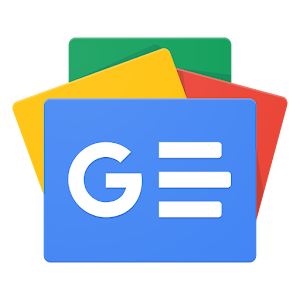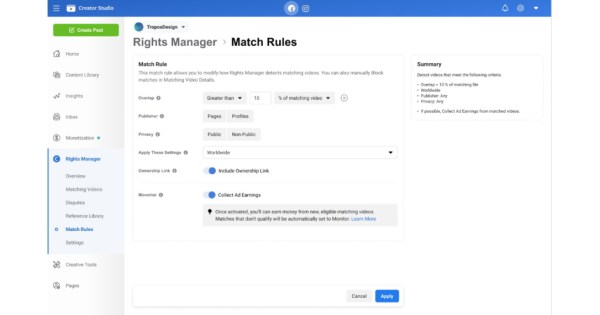Google Analytics is a free web analytics service that offers basic analytical tools and statistics used for search engine optimization (SEO) and marketing. The performance of a website and information about its visitors are monitored and analyzed using Google Analytics.
In addition to identifying the most popular sources of user activity, it can provide valuable information about the effectiveness of a company’s marketing initiatives and campaigns, keep tabs on how customers complete tasks (such as making purchases or adding items to their shopping carts), identify trends and patterns in customer behavior and gather demographic data.
Learn The Latest Trends in Data Analytics!Post Graduate Program In Data AnalyticsExplore Program
How Does Google Analytics Work?
To collect user data from every website visitor, Google Analytics employs the usage of page tags. JavaScript page tags are added to each page’s code. Google’s data gathering servers get data from each visitor via the use of this tag, which is embedded in the visitor’s browser. Customizable reports may then be generated by Google Analytics to monitor and show data on the website traffic, the average session lengths, sessions by route, page views, and more.
To collect visitor information, the page-tag acts as a web beacon or web bug on the page. The system, however, cannot gather data from users who have deactivated cookies since it is reliant on cookies.
Google Analytics has capabilities that allow users to see how visitors interact with their websites over time. Data gathering, analytics, tracking, visualization, reporting, and interaction with other applications are all made possible via the use of features. The following are only a few examples:
Tools for data visualization and monitoring, like dashboards, scorecards, and activity charts that illustrate data changes over time.
Filtration, modification, and analysis of funnels of data.
Application program interfaces (APIs) for data collecting.
Actionable insights, intelligence, and identification of anomalies.
Segmentation for the purpose of analyzing subsets of data, such as conversions.
Tailor-made reports for advertising, audience acquisition, audience behavior, and conversion.
Sharing and conversation through email.
Integrations with Google Ads, Salesforce Marketing Cloud, Google Data Studio, Google Optimize 360, Google AdSense, Google Optimize 360, Google Display & Video 360, Google Search Ads 360, Google Search Console, and Google Ad Manager.
For each website, a unique set of metrics may be shown in the Google Analytics dashboard, with the option for users to store profiles for future use. Content summary, keywords, referral sites, visitors review, map overlay, and traffic streams overview are some of the categories that may be tracked.
In addition to being accessible via the Google Analytics website, a plugin or a widget for integrating the dashboard onto other websites is also made available. Independent vendors also provide customized Google Analytics dashboards, which may be customized to meet specific needs.
What is a Metric in Google Analytics?
A metric is a quantitative measurement unit that is universally accepted. Google Analytics allows customers to monitor up to 200 metrics in order to assess the performance of their websites. While certain measures may be more beneficial to some firms than others, the following are among the most often used metrics:
1. Users
A user is defined as a unique or first-time visitor to a website.
2. Bounce rate
The number of visitors that only looked at one page. The Google Analytics servers received just a single request from each of these visitors.
3. Sessions
This is the collection of visitor reactions that occur throughout a 30-minute period of activity.
4. Average Session Duration
The average amount of time that each visitor spends on the site.
5. Percentage of New Sessions
The proportion of website visitors who are making their first visit.
6. Pages Per Session
The maximum number of times a page is seen during a single session.
7. Goal Completions
How often a visitor performs a desired activity. Additionally, this is referred to as conversion.
8. Pageviews
The number of pages that have been visited.
What is a Dimension in Google Analytics?
These are descriptive or categorical qualities or labels that are used to classify and organize data. The dimension “Region” might be used, for instance, if the average session duration is being assessed over many distinct areas. Measures like “average session length” may be used to illustrate the concept of metrics. In Google Analytics, dimensions may be rearranged. Dimensions such as these are typical examples:
Language
Browser type
City and country
Models of devices
User age group
User Acquisition Data Vs. User Behavior Data
Businesses might use Google Analytics to collect different sorts of data for promotional reasons.
1. User Acquisition Data
Allows for a better understanding of how visitors arrive at the website. Customers may arrive through a number of routes, including sponsored search engine results, organic search engine outcomes, social media links, or by putting the URL directly into the browser. It is vital to understand user acquisition statistics in order to maximize website traffic.
2. User Behavior Data
Demonstrates how visitors interact with the website and their level of engagement. This covers the time spent on each page, the number of pages visited, and whether or not they interact with videos and visuals. This data may be employed to develop web layouts that more effectively link users to the information they want, resulting in a more successful user experience. Optimization of user experiences based on user behavior data increases the likelihood of sales and conversions.
What Is Google Analytics 4?
The most current version of Google Analytics, known as GA4, was published in October 2020. Google Analytics 4 is a significant upgrade over prior iterations. Machine learning is used instead of third-party cookies to improve data accuracy, and a totally new user experience is provided. The following are some of the new features in Google Analytics 4:
Artificial intelligence (AI) and machine learning
Interaction with Google Ads at a higher level
Customer-focused reporting is based on data collected throughout the lifecycle
Tracking capabilities that don’t need any extra coding and can deliver data in real-time
Increased data management and regulatory compliance features
Universal Analytics Vs Google Analytics 4
Google Analytics 4
Universal Analytics
Interface
It features a smaller number of sidebar reports. It also provides analytical reports for both users and events.
The sidebar of this Google Analytics property features additional reporting. It makes no distinction between user analytics and event analytics.
Tracking
Even-based monitoring will be included in Google Analytics 4. Every encounter is referred to as an event. A set of measures, such as these, may be set up by the system administrator.
Session Start
First Visit
Page Views
Form Submission
The hit-based technique is used by Universal Tracking Property. This includes the following:
Page Hits
E-commerce Hits
Event Hits
Social Media Hits
Events
Google Analytics 4 frees you from the constraints of values, labels, actions, and categories. There are many different kinds of events:
Automated Data Collection
Measures that need extra parameters to be added
Recommendations such as logging in, sharing, or registering
Custom Events
Not all hits are counted as “events” in Universal Analytics. There are many different kinds of events:
Category
Label
Action
Value
Goals
In Google Analytics 4, there is no measuring system. Some events may be labeled and their values can be changed by an administrator. It allows users to design their own events and collect the data they need to make informed decisions.
It is possible to measure events as conversions and objectives in the Universal Analytics Property.
Page Views
The event page_view is used in Google Analytics to monitor 4 page views.
While in Universal Analytics, page views have distinct attributes:
Page_path
Page_title
Page_attributes
Sessions
The beginning of a session is referred to as an event in Google Analytics 4. The length of the event is determined by how long it takes people to travel between the first and final events.
The time a user spends on a website is referred to as a “session” in Universal Analytics. It is possible to have:
Page Views
Conversions
Interactions
It doesn’t matter whether the user has been idle for a long time if they still conduct an activity.
Become One of The Highest Paid Digital MarketerWith Purdue Digital Marketing PG ProgramExplore Course
Benefits and Limitations of Google Analytics
Using Google Analytics offers both advantages and disadvantages. In general, users like the platform since it is flexible, powerful, and cost-free. In addition, the following advantages are provided by Google Analytics:
Free, simple to use, and beginner-friendly are just some of the advantages of this service.
Metrics and dimensions may be customized in Google Analytics. This platform is capable of capturing a wide range of valuable information.
There are other features in Google Analytics, including data visualization, monitoring, reporting, and predictive analysis, amongst other things.
Some past weaknesses of Google Analytics have been identified as potentially affecting the accuracy of its data. These include the following:
By blocking Google Analytics cookies, some browser plugins, ad filtering tools, and private networks, users may lower their data’s overall accuracy and precision by a significant margin.
Samples of 500,000 random sessions are used to lessen server load. Only the total number of visitors is shown as an error margin in these reports. As a result, extremely significant error margins might exist even for short pieces of data.
Learn Data Analytics With Simplilearn
Simplilearn offers a free Data Analytics course that is the ideal starting point for your career as a Google Analytics specialist. Learn how to create a Google Analytics account and how to interpret the numbers that contribute to increased traffic and revenue. Also, you can opt for a Post Graduate Program in Digital Marketing for an in-depth look into the digital marketing domain.
FAQs
1. How can Google Analytics help in improving website performance?
Google Analytics can help in improving website performance by providing valuable insights into user behavior, allowing businesses to make data-driven decisions for optimization.
2. What is a session in Google Analytics?
In Google Analytics, a session is a single, continuous visit by a user to a website, which can encompass multiple interactions with the site’s pages and content within a specific time frame, typically lasting 30 minutes of inactivity or at the end of the day.
3. What is the difference between ‘Sessions’ and ‘Users’ in Google Analytics?
Sessions: Sessions refer to the individual visits or interactions that users have with a website within a specific time frame (usually 30 minutes of inactivity or at the end of the day). If a user visits a website, leaves, and then returns within the defined time frame, it is still counted as one session. Sessions are used to measure user engagement and activity on a website.
Users: Users represent the unique individuals or devices that access a website over a selected time period. Each user is counted only once, regardless of how many sessions they generate. Users provide insights into the number of distinct individuals or devices that interact with a website, helping you understand the reach of your site.
4. How do I set up Google Analytics for my website?
To set up Google Analytics for your website, follow these steps:
Create a Google Analytics account.
Set up a new property for your website.
Obtain the tracking code provided by Google Analytics.
Add the tracking code to your website’s HTML code, typically in the section of every page you want to track.
Verify that the tracking code is working by checking Google Analytics for data.
Start analyzing website traffic and user behavior.
5. Does Google Analytics require coding?
Yes, Google Analytics requires adding a tracking code to your website’s HTML, which may involve some basic coding knowledge or the use of a content management system (CMS) plugin for non-coders.
6. What are ‘Goals’ and ‘Conversions’ in Google Analytics?
Goals: Goals are specific actions or events that you want users to complete on your website, such as form submissions, pageviews, or product purchases. They help you measure the success of your website in achieving predefined objectives.
Conversions: Conversions are instances where users successfully complete the goals you’ve set. They indicate that a user has taken the desired action on your website, like making a purchase or signing up for a newsletter, and are a key metric for assessing the effectiveness of your online strategy.
7. How can Google Analytics help in improving website performance?
Google Analytics helps improve website performance by providing insights into user behavior, traffic sources, and content engagement, enabling data-driven optimizations for better user experience and higher conversion rates.
8. Is it hard to learn Google Analytics?
No, Google Analytics can be learned at a basic level relatively easily, but mastering its advanced features and data analysis can be more challenging and time-consuming.
9. Can Google Analytics track mobile app data as well?
Yes, Google Analytics can track mobile app data using Google Analytics for Mobile Apps (Firebase Analytics for newer versions), allowing you to analyze user behavior within mobile applications.









